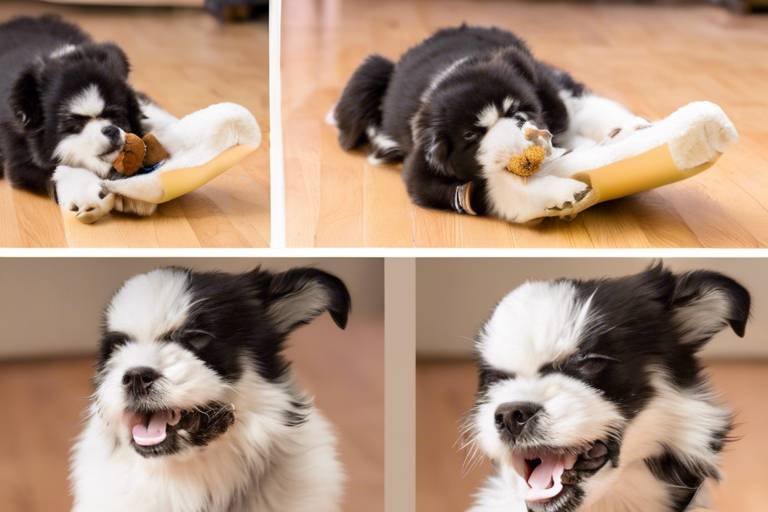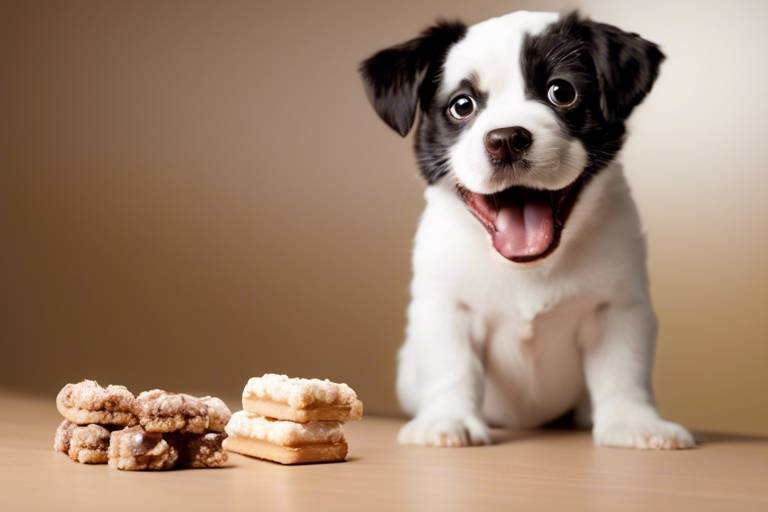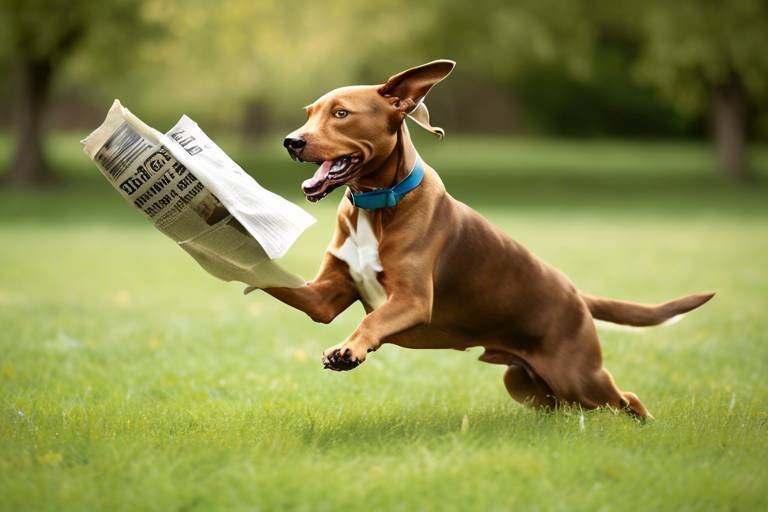Tips for Teaching Your Dog to Follow a Routine
Establishing a routine for your dog can be a game-changer, not just for their behavior but also for your relationship with them. Imagine your dog as a little sponge, soaking up everything you teach them. When you provide a consistent schedule, you’re essentially giving them a roadmap to navigate their day. This roadmap not only helps them understand what to expect but also significantly reduces anxiety. Just like humans, dogs thrive on predictability. So, let’s dive into some essential strategies to create a routine that works for both of you!
Recognizing your dog's physical and emotional needs is crucial for creating an effective routine that promotes their well-being and happiness. Think of your dog as a delicate balance scale; if one side is overloaded with physical exercise while the other side lacks mental stimulation, the scale tips, leading to behavioral issues. Dogs need a mix of physical activity, mental challenges, and emotional bonding time to feel fulfilled. By tuning into their needs, you can craft a routine that caters to their unique personality and energy levels, ultimately leading to better compliance and behavior.
Creating a structured daily schedule helps your dog know what to expect, reducing anxiety and promoting a sense of security. Imagine starting your day knowing exactly what’s coming next—wouldn’t that be comforting? Just like us, dogs feel more relaxed when they have a predictable routine. By consistently scheduling feeding times, walks, and playtime, you help your furry friend settle into a rhythm that enhances their overall behavior.
Setting specific feeding times not only aids digestion but also helps your dog anticipate meals, leading to a calmer, more disciplined behavior around food. Think of it this way: if you knew your lunch was at noon every day, wouldn’t you feel a little more at ease around lunchtime? Dogs are no different! When they know when to expect their meals, they’re less likely to beg or become anxious.
Selecting high-quality food tailored to your dog's age and activity level can enhance their overall health. Just like a car needs the right fuel, your dog requires the right nutrition to function optimally. A well-fed dog is a happy dog, and a happy dog is more likely to follow your established routine.
Understanding portion sizes is essential for maintaining your dog's health and preventing obesity. Think about it: if you overstuff a suitcase, it becomes cumbersome and hard to manage. The same goes for your dog! If they’re overfed, they might become lethargic and less willing to engage in routine activities. Keeping an eye on portion sizes ensures your dog remains energetic and eager to participate in their daily schedule.
Incorporating regular exercise into your dog's routine is vital for their physical and mental health. Just like humans need to stretch their legs after sitting for too long, dogs need their exercise to burn off excess energy. Regular walks, play sessions, and even some mental challenges, like puzzle toys, can keep your dog engaged and ready to follow commands during training sessions.
Utilizing positive reinforcement techniques can help reinforce desired behaviors, making it easier for your dog to adapt to the established routine. Imagine trying to learn a new skill without any encouragement—how demotivating would that be? By rewarding your dog for their good behavior, you’re not just teaching them; you’re building a bond based on trust and understanding.
Rewarding your dog with treats or praise for following the routine encourages them to repeat those behaviors. Think of it as a high-five for a job well done! When your dog knows they’ll be rewarded for good behavior, they’re more likely to stay engaged and eager to comply with your routine.
Using the same commands consistently helps your dog learn faster. Imagine if someone spoke to you in different languages every time; it would be confusing, right? The same principle applies to dogs. By using consistent commands, you help your dog associate specific words with actions, making it easier for them to follow the routine you’ve set.
Regularly assessing your dog's progress allows you to make necessary adjustments to the routine, ensuring it remains effective and suitable for their evolving needs. Just like a gardener tends to their plants, you should keep an eye on how your dog is responding to their routine. If something isn’t working, don’t hesitate to tweak it!
Being attentive to your dog's body language and behavior can help you identify signs of stress. If your dog seems restless or anxious, it might be time to reevaluate your routine. Remember, a happy dog is a well-adjusted dog, and by keeping their comfort in mind, you can create a routine that feels good for both of you.
Acknowledging and celebrating your dog's achievements, no matter how small, fosters a positive environment. Whether it’s mastering a new command or simply sticking to the routine for a week, celebrations can motivate them to continue following the established routine. Think of it as a little party for your furry friend!
- How long does it take to establish a routine with my dog? It varies by dog, but consistency over a few weeks can lead to significant improvements.
- What if my dog doesn’t respond to the routine? Adjust your approach; sometimes, slight changes in commands or rewards can make a big difference.
- Can I change the routine once it’s established? Absolutely! As your dog grows and their needs change, feel free to adapt the routine accordingly.
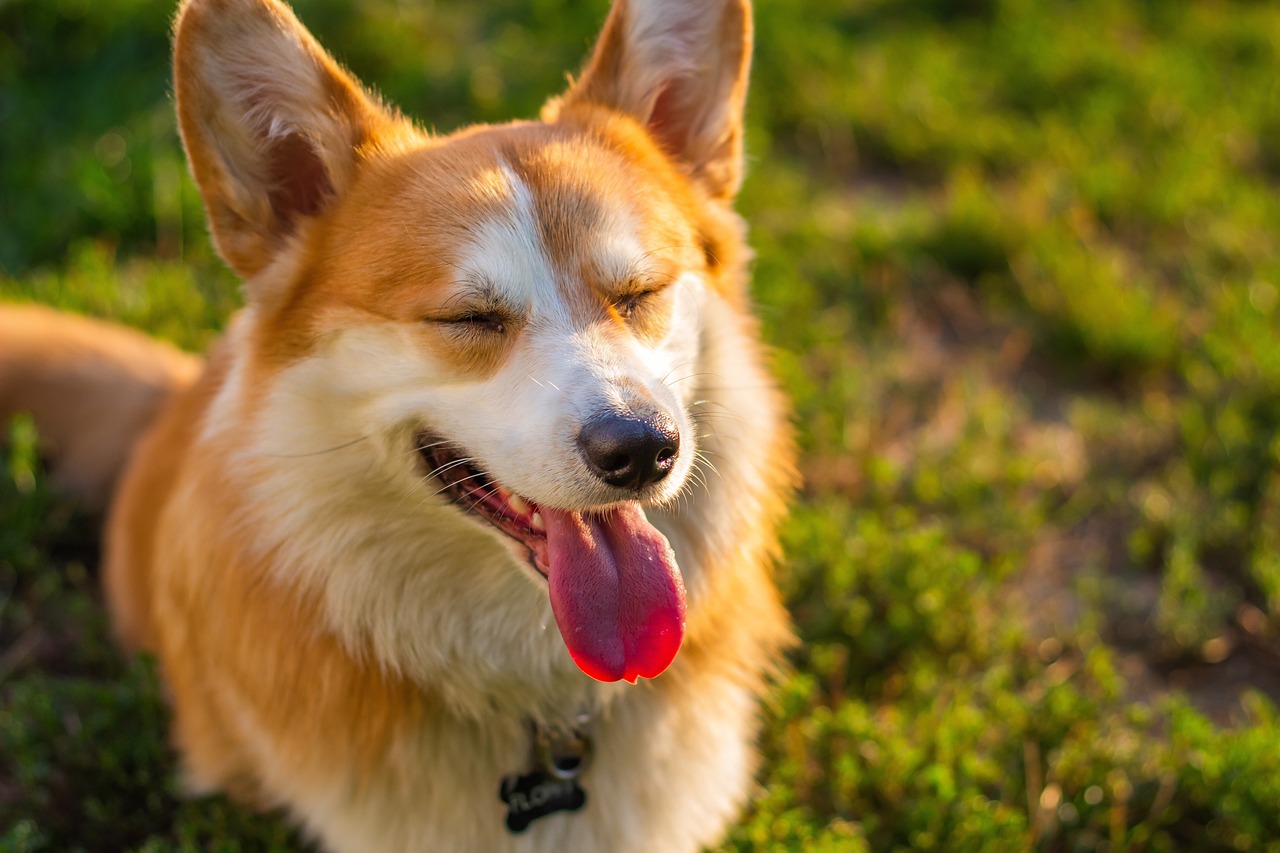
Understanding Your Dog's Needs
Recognizing your dog's physical and emotional needs is crucial for creating an effective routine that promotes their well-being and happiness. Just like humans, dogs thrive when their basic needs are met, and understanding these needs lays the foundation for a harmonious relationship. Imagine your dog as a child; they need structure, love, and guidance to flourish. By paying attention to their needs, you can foster a sense of security that leads to better compliance and behavior.
First and foremost, let's talk about physical needs. Dogs require adequate nutrition, exercise, and mental stimulation. When you establish a routine that incorporates regular feeding times, daily walks, and play sessions, you help your dog anticipate what comes next. This predictability can significantly reduce anxiety, allowing your furry friend to feel more secure in their environment. For instance, if you consistently walk your dog at the same time every day, they will start to recognize the cues that signal it's time for their favorite part of the day.
Now, we can't overlook the emotional needs of your dog. Dogs are social animals that thrive on companionship and interaction. They need to feel loved and included in family activities. This is where the bond between you and your dog deepens. Regular playtime not only provides physical exercise but also strengthens your emotional connection. Think of it as a dance; the more you practice together, the more in sync you become. When your dog feels emotionally fulfilled, they are more likely to follow your lead and adhere to the routine you've set.
It’s also essential to consider the individual personality of your dog. Just like humans, every dog is unique, with their own quirks and preferences. Some dogs may be more energetic and require longer walks, while others may prefer a calm environment with less stimulation. Understanding these differences helps you tailor a routine that suits your dog’s specific needs. For example, if your dog is particularly anxious, you might want to incorporate calming activities, such as gentle petting or quiet time, into their daily schedule.
In summary, understanding your dog's needs involves a holistic approach that encompasses both physical and emotional aspects. By creating a routine that addresses these needs, you pave the way for a happier, healthier dog who is eager to follow your lead. Remember, a well-rounded routine not only benefits your dog but also enhances the bond you share, making every day a little brighter for both of you.

Establishing a Daily Schedule
Creating a structured daily schedule is like drawing a roadmap for your dog’s day—it helps them navigate through their activities with confidence and ease. Dogs thrive on routine; it gives them a sense of security and predictability. Imagine how you feel when you know what to expect in your day—your dog feels the same way! By establishing a consistent daily schedule, you’re not just organizing their day but also enhancing their emotional well-being and overall behavior.
Think about it: when your dog knows that breakfast is served at 8 AM, playtime is at 3 PM, and evening walks are at 6 PM, they can anticipate these activities, which reduces anxiety. Just like we feel more relaxed when we have a plan, our furry friends benefit from this predictability too. So, let’s break down the key components of a daily schedule that will keep your pup happy and engaged.
Setting specific feeding times is crucial. It not only aids digestion but also helps your dog anticipate meals, leading to a calmer, more disciplined behavior around food. When your dog knows that food is coming at certain times, they’re less likely to beg or show signs of anxiety. This consistency can turn mealtime into a peaceful affair rather than a chaotic one. Consider a table to visualize a sample feeding schedule:
| Time | Activity |
|---|---|
| 8:00 AM | Breakfast |
| 12:00 PM | Lunch |
| 6:00 PM | Dinner |
By sticking to this kind of routine, you’ll find that your dog becomes more relaxed and well-behaved during mealtimes, which is a win-win for both of you!
Now, let’s talk about the food itself. Selecting high-quality food tailored to your dog’s age and activity level can significantly enhance their overall health. Just like we need the right nutrients to function well, our dogs do too! A balanced diet can make them more receptive to following a routine. If your dog feels good physically, they are more likely to be engaged and eager to participate in their daily activities.
Understanding portion sizes is essential for maintaining your dog's health and preventing obesity. Overfeeding can lead to lethargy, making it harder for your dog to engage in routine activities. Think of portion control as your dog’s personal trainer—it helps them stay fit and energetic. Use a measuring cup to ensure you’re giving them the right amount of food based on their weight and activity level. This way, your dog won’t just follow the routine; they’ll thrive in it!
Incorporating regular exercise into your dog's routine is vital for their physical and mental health. Just as we need to stretch our legs and get our hearts pumping, dogs require a good amount of exercise to expend energy and stay focused during training sessions. Whether it’s a brisk walk, a game of fetch, or a fun trip to the dog park, make sure your dog gets plenty of opportunities to move around. A tired dog is a happy dog!
So, as you can see, establishing a daily schedule isn’t just about keeping your dog busy; it’s about creating a harmonious environment where they feel secure and loved. By being consistent with feeding times, choosing the right food, controlling portions, and incorporating exercise, you’re setting the stage for a well-behaved companion who thrives on routine.
- How long should I walk my dog daily? - Ideally, dogs should get at least 30 minutes to 2 hours of exercise each day, depending on their breed and energy level.
- What should I do if my dog refuses to follow the routine? - Patience is key! Gradually introduce the routine, and use positive reinforcement to encourage compliance.
- Can I adjust the schedule as my dog ages? - Absolutely! As your dog grows, their needs may change, so be flexible and adjust the routine accordingly.
Feeding Times
Setting specific for your dog is more than just a routine; it's a vital component of their overall well-being. Just like humans, dogs thrive on structure, and knowing when their next meal is coming can significantly reduce anxiety. Imagine how you feel when you have a schedule to follow—less stress, right? The same goes for our furry friends!
When you establish regular feeding times, your dog learns to anticipate meals, which can lead to a more calm and disciplined demeanor around food. Instead of frantically barking or begging, they’ll start to relax, knowing that their meal is just around the corner. This anticipation can be especially beneficial for dogs that may struggle with separation anxiety or those that are easily excitable.
To create an effective feeding schedule, consider the following factors:
- Age: Puppies, adults, and senior dogs have different nutritional needs and feeding frequencies.
- Activity Level: An active dog may require more frequent meals to sustain their energy levels compared to a more sedentary dog.
- Health Conditions: Some dogs may have specific dietary requirements based on health issues, necessitating a tailored feeding schedule.
Here’s a simple table to illustrate a typical feeding schedule for different life stages of dogs:
| Dog Age | Feeding Frequency | Notes |
|---|---|---|
| Puppy (up to 6 months) | 3-4 times a day | Smaller portions to aid digestion. |
| Adult (1-7 years) | 2 times a day | Maintain a healthy weight with portion control. |
| Senior (7+ years) | 2 times a day | Consider lower calorie food for weight management. |
By sticking to a consistent feeding schedule, you not only help your dog with digestion but also strengthen the bond between you two. When your dog knows what to expect, it fosters a sense of security and trust. So, next time you’re thinking about feeding your dog, remember that it’s not just about filling their bowl; it’s about nurturing their mind and spirit too!
Choosing the Right Food
When it comes to your dog's diet, choosing the right food is not just about filling their bowl; it's about fueling their body and mind for a healthy, happy life. Just like us, dogs have different nutritional needs based on their age, breed, and activity level. So, how do you navigate the sea of dog food options out there? It can feel overwhelming, but with a little guidance, you can make informed choices that will benefit your furry friend.
First, consider the ingredients. Look for high-quality proteins like chicken, beef, or fish as the primary ingredient. Avoid foods that list fillers such as corn or soy as the main components, as these can lead to poor digestion and may not provide the essential nutrients your dog needs. A good rule of thumb is to select foods that have a short list of ingredients that you can easily recognize and understand. Remember, a dog's diet should be rich in:
- Proteins: Essential for muscle development and overall health.
- Fats: Provide energy and support healthy skin and coat.
- Carbohydrates: Offer energy and aid digestion.
- Vitamins and Minerals: Crucial for immune function and overall well-being.
Next, think about your dog's specific needs. For example, if your dog is a puppy, they require a diet that supports growth and development, while senior dogs may benefit from food that promotes joint health and is lower in calories to prevent obesity. Additionally, if your dog has any health issues, such as allergies or sensitivities, it’s important to consult with your veterinarian to find a suitable diet.
Another factor to consider is the feeding method. You might choose between dry kibble, wet food, or a raw diet. Each type has its pros and cons. For instance, dry kibble is often more convenient and helps keep your dog's teeth clean, while wet food can be more palatable and hydrating. A balanced approach might even involve mixing the two to provide variety and enhance palatability.
Lastly, don’t forget about portion control. Even the best food won't do your dog any good if they’re overeating. Follow the feeding guidelines on the dog food package, but also pay attention to your dog's body condition. If they’re gaining weight, consider reducing the portion size or adjusting the frequency of meals. Keeping your dog at a healthy weight is crucial for their energy levels and overall well-being.
In summary, choosing the right food for your dog is a vital part of establishing a routine that promotes their health and happiness. By focusing on quality ingredients, understanding your dog's specific needs, considering different feeding methods, and practicing portion control, you can ensure that your furry friend is well-nourished and ready to embrace the daily activities you have planned together.
1. How do I know if I'm feeding my dog the right amount?
It's essential to follow the feeding guidelines on the dog food package and adjust based on your dog's activity level and body condition. Regularly check their weight and consult your vet if you're unsure.
2. Can I switch my dog's food suddenly?
It's best to transition gradually to avoid digestive upset. Mix a small amount of the new food with the current food, gradually increasing the new food over a week or so.
3. Are grain-free diets better for dogs?
Not necessarily. Grain-free diets are great for dogs with specific allergies, but most dogs can digest grains without issues. Always consult your vet before making significant dietary changes.
4. How often should I feed my dog?
Most adult dogs do well with two meals a day, while puppies may require three or four smaller meals. Establishing a routine will help your dog know when to expect food.
Portion Control
When it comes to your dog's diet, is an essential aspect that shouldn’t be overlooked. Just like us, dogs can easily fall into the trap of overeating, which can lead to serious health issues such as obesity, diabetes, and joint problems. Imagine your furry friend as a car; if you overfill the tank, it can cause all sorts of issues down the line. Similarly, overfeeding your dog can lead to a range of health complications that hinder their ability to follow a routine and stay active.
To effectively manage your dog's portions, start by consulting your veterinarian for tailored advice based on your dog's breed, age, and activity level. They can provide you with a recommended daily caloric intake, which serves as a great baseline for portioning their meals. For instance, a highly active dog may require more calories than a senior dog who prefers lounging on the couch.
Once you have a clear idea of how much food your dog needs, consider using a measuring cup to ensure accuracy. This simple tool can help you avoid the common pitfall of “eyeballing” the food, which often leads to overfeeding. Additionally, you might find it helpful to divide your dog's daily food into two or three meals instead of one large serving. This not only aids digestion but also keeps your dog feeling satisfied throughout the day.
Here's a simple table to illustrate how portion sizes can vary based on your dog's weight and activity level:
| Dog Weight (lbs) | Active Dogs (cups/day) | Less Active Dogs (cups/day) |
|---|---|---|
| 10 | 1 | 0.75 |
| 20 | 1.5 | 1.25 |
| 30 | 2 | 1.75 |
| 50 | 3 | 2.5 |
| 70 | 4 | 3.25 |
Another effective strategy is to monitor your dog's weight regularly. If you notice that they are gaining or losing weight unexpectedly, it may be time to adjust their portion sizes. Keeping a food journal can also be beneficial. Documenting what and when you feed your dog can help you identify patterns and make necessary adjustments to their diet.
Finally, remember that portion control is not just about the quantity of food; it's also about the quality. Opt for high-quality dog food that is rich in nutrients and free from fillers. This not only aids in maintaining a healthy weight but also improves your dog's overall well-being, making them more eager to engage in their daily routine.
- How do I know if I’m feeding my dog the right portion? Consult your veterinarian for guidelines based on your dog's specific needs and monitor their weight regularly.
- Can I free-feed my dog? Free-feeding can lead to overeating and obesity; it's generally better to stick to scheduled meal times.
- What should I do if my dog is overweight? Reduce portion sizes and consult your vet for a weight management plan.
Exercise Routines
This article provides essential strategies for establishing a routine with your dog, ensuring consistent behavior, improved training outcomes, and a stronger bond between you and your furry friend.
Recognizing your dog's physical and emotional needs is crucial for creating an effective routine that promotes their well-being and happiness, ultimately leading to better compliance and behavior.
Creating a structured daily schedule helps your dog know what to expect, reducing anxiety and promoting a sense of security. Consistency in feeding, walks, and playtime is key.
Setting specific feeding times not only aids digestion but also helps your dog anticipate meals, leading to a calmer, more disciplined behavior around food.
Selecting high-quality food tailored to your dog's age and activity level can enhance their overall health, making them more receptive to following a routine.
Understanding portion sizes is essential for maintaining your dog's health and preventing obesity, which can affect their energy levels and willingness to engage in routine activities.
Incorporating regular exercise into your dog's routine is vital for their physical and mental health. Just like humans, dogs need to burn off energy to stay focused and calm. Think of exercise as a way to hit the "reset" button on your dog's mood. A well-exercised dog is often a well-behaved dog!
When planning your dog's exercise routine, consider the following:
- Type of Exercise: Different breeds have different exercise needs. For instance, a Border Collie may require more vigorous activity than a Bulldog. Tailor the type of exercise to your dog's breed and energy level.
- Duration: Aim for at least 30 minutes of physical activity each day. This can be broken into shorter sessions if needed, but consistency is key.
- Variety: Mix up the activities to keep things exciting. This could include walks, runs, fetch, or even agility training. Think of it as a buffet of fun!
Additionally, incorporating mental stimulation into your dog's exercise routine can be a game-changer. Activities like puzzle toys or scent work can engage your dog's mind and help tire them out just as much as physical exercise. Remember, a tired dog is a happy dog!
Utilizing positive reinforcement techniques can help reinforce desired behaviors, making it easier for your dog to adapt to the established routine and follow commands.
Rewarding your dog with treats or praise for following the routine encourages them to repeat those behaviors, strengthening their understanding and compliance.
Using the same commands consistently helps your dog learn faster, as they associate specific words with actions, making it easier to follow the routine you've set.
Regularly assessing your dog's progress allows you to make necessary adjustments to the routine, ensuring it remains effective and suitable for their evolving needs.
Being attentive to your dog's body language and behavior can help you identify signs of stress, allowing you to modify the routine to better suit their comfort level.
Acknowledging and celebrating your dog's achievements, no matter how small, fosters a positive environment and motivates them to continue following the established routine.
Q: How much exercise does my dog need?
A: Most dogs need at least 30 minutes of exercise daily, but this can vary based on breed, age, and health. Always consult your vet for personalized advice.
Q: What if my dog doesn't seem to enjoy exercise?
A: Try different activities! Some dogs prefer a leisurely walk, while others might love a game of fetch. Pay attention to what excites your dog and adapt accordingly.
Q: Can I over-exercise my dog?
A: Yes, especially in hot weather or with older dogs. Always monitor your dog's energy levels and be mindful of their limits.
Q: How can I tell if my dog is stressed?
A: Look for signs like excessive panting, whining, or hiding. If you notice these behaviors, it might be time to adjust your routine.

Training Techniques for Consistency
When it comes to teaching your dog to follow a routine, employing effective training techniques is crucial for consistency and success. One of the most powerful methods is positive reinforcement, which involves rewarding your furry friend for exhibiting desired behaviors. This technique not only encourages your dog to repeat those behaviors but also strengthens the bond between you two. Imagine your dog learning that sitting before getting a treat leads to a delicious reward. It’s a win-win situation!
To make the most of positive reinforcement, it's essential to use rewards that truly motivate your dog. This could be their favorite treats, a beloved toy, or even enthusiastic praise. The key is to ensure that the reward is something your dog genuinely values. For instance, if your pooch goes through a whole week of following the routine flawlessly, shower them with extra treats and affection. This not only reinforces the behavior but makes your dog excited about the routine!
Another important aspect of training is the consistency of commands. Using the same words for specific actions helps your dog associate those words with their corresponding behaviors. For example, if you consistently use "sit" when you want your dog to sit down, they will quickly learn what you expect from them. Imagine trying to learn a new language but hearing different words for the same thing every time. Confusing, right? The same goes for your dog. Stick to a set of commands and use them consistently to make training smoother and more effective.
Additionally, timing is everything when it comes to training. You should reward your dog immediately after they perform the desired action. This helps them make the connection between their behavior and the reward. If you wait too long, your dog might not understand what they are being rewarded for, which can lead to confusion. Think of it like a game where the rules are clear: the faster you reward, the more fun the game becomes!
While training, it's also beneficial to incorporate short training sessions throughout the day rather than one long session. Dogs, especially puppies, have short attention spans, and lengthy training can lead to frustration for both you and your pet. Aim for 5 to 10-minute sessions that are engaging and fun. You can even mix in playtime to keep things interesting. It’s like having a workout that feels like play – your dog will be more eager to participate!
To track your progress and maintain consistency, consider creating a training log. This log can help you note which commands your dog responds well to, what rewards are most effective, and any adjustments you need to make to your routine. Here’s a simple example of what your log might look like:
| Date | Command Used | Response | Reward Given |
|---|---|---|---|
| 10/01 | Sit | Successful | Peanut Butter Treat |
| 10/02 | Stay | Needs Improvement | Cheese Slice |
Lastly, remember that training is not just about commands and rewards; it’s also about patience and encouragement. Every dog learns at their own pace, and it’s essential to celebrate the small victories along the way. If your dog struggles with a command, don’t be discouraged. Instead, try breaking it down into smaller steps and celebrating each one. This approach not only helps your dog learn but also fosters a positive and loving environment.
In summary, utilizing positive reinforcement, maintaining consistency in commands, timing your rewards, keeping training sessions short, and tracking progress can significantly enhance your dog's ability to follow a routine. With these techniques, you'll not only see improved behavior but also strengthen the bond you share with your furry friend.
- How long does it take for a dog to learn a routine?
Every dog is different, but with consistent training, most dogs can learn basic routines within a few weeks. - What should I do if my dog doesn’t respond to commands?
Try using higher-value rewards, adjusting your training approach, or consulting a professional trainer for guidance. - Can I train an older dog?
Absolutely! Older dogs can learn new routines, though they might take a bit longer than younger pups. - How can I keep my dog motivated during training?
Use a variety of rewards, make training sessions fun, and incorporate playtime to keep your dog engaged.
Using Rewards Effectively
This article provides essential strategies for establishing a routine with your dog, ensuring consistent behavior, improved training outcomes, and a stronger bond between you and your furry friend.
Recognizing your dog's physical and emotional needs is crucial for creating an effective routine that promotes their well-being and happiness, ultimately leading to better compliance and behavior.
Creating a structured daily schedule helps your dog know what to expect, reducing anxiety and promoting a sense of security. Consistency in feeding, walks, and playtime is key.
Setting specific feeding times not only aids digestion but also helps your dog anticipate meals, leading to a calmer, more disciplined behavior around food.
Selecting high-quality food tailored to your dog's age and activity level can enhance their overall health, making them more receptive to following a routine.
Understanding portion sizes is essential for maintaining your dog's health and preventing obesity, which can affect their energy levels and willingness to engage in routine activities.
Incorporating regular exercise into your dog's routine is vital for their physical and mental health, helping them expend energy and remain focused during training sessions.
Utilizing positive reinforcement techniques can help reinforce desired behaviors, making it easier for your dog to adapt to the established routine and follow commands.
When it comes to training your dog, rewards play a pivotal role in shaping their behavior. By using rewards effectively, you can create a positive association with the actions you want your dog to repeat. This doesn’t just mean giving treats; it’s about understanding what makes your dog tick. For some dogs, a simple pat on the back or a cheerful "good boy!" can be just as motivating as a tasty treat. It's essential to observe your dog and determine what type of reward resonates most with them.
One effective strategy is to use a variety of rewards. For instance, you might consider a mix of food treats, verbal praise, and even playtime as rewards. This not only keeps your dog engaged but also helps them learn that following the routine can lead to different enjoyable outcomes. Just like us, dogs can get bored with the same reward over time. So, switch it up! If your dog knows they can earn their favorite toy for following a command, they’ll be more likely to stay focused.
To make the most of your rewards, timing is everything. Deliver the reward immediately after your dog performs the desired behavior. This helps them connect the dots between their action and the reward, reinforcing the behavior you want to encourage. For example, if your dog sits on command, give them a treat right away to solidify that behavior in their mind. It’s like a lightbulb moment for them!
Additionally, consider using a reward system that escalates with your dog's progress. Start with high-value treats for new behaviors and gradually transition to lower-value rewards as the behavior becomes more consistent. This way, your dog learns that while the rewards might change, the fun of following the routine remains constant.
Regularly assessing your dog's progress allows you to make necessary adjustments to the routine, ensuring it remains effective and suitable for their evolving needs.
Being attentive to your dog's body language and behavior can help you identify signs of stress, allowing you to modify the routine to better suit their comfort level.
Acknowledging and celebrating your dog's achievements, no matter how small, fosters a positive environment and motivates them to continue following the established routine.
- How long does it take for a dog to adapt to a new routine?
Every dog is different, but generally, it can take anywhere from a few days to several weeks. Patience is key! - What if my dog doesn't respond to rewards?
Try different types of rewards. Some dogs prefer toys or praise over treats. Find what excites your dog! - Can routines help with behavioral issues?
Absolutely! A consistent routine can help reduce anxiety and improve overall behavior.
Consistency in Commands
When it comes to training your dog, consistency is key. Just like learning a new language, your furry friend needs to associate specific words with actions. If you use different commands for the same behavior, it can confuse them and hinder their learning process. For instance, if you say "sit" one day and "sit down" the next, your dog might not understand what you're asking. This inconsistency can lead to frustration for both you and your pet.
To create a solid foundation for your dog's training, it’s essential to establish a set of commands that everyone in the household will use consistently. This means that whether it’s you, your partner, or the kids, everyone should be on the same page. You could even create a small cheat sheet with the commands you use most often. This can help ensure that no one accidentally introduces a new command that could confuse your pup.
| Command | Meaning | Example Usage |
|---|---|---|
| Sit | Dog sits down on their haunches | "Fido, sit!" |
| Stay | Dog remains in place until told otherwise | "Buddy, stay there!" |
| Come | Dog moves towards you | "Max, come here!" |
Moreover, using consistent tone and body language is equally important. Dogs are incredibly perceptive and can pick up on your cues. If you’re using a high-pitched voice for "good boy" but a stern tone for commands, your dog may become confused about what behavior is truly desired. Thus, always pair the same command with the same tone and body language to reinforce the message.
Remember, the goal is to create a routine that your dog can easily follow. By sticking to the same commands, you’re not just teaching them what to do; you’re also building their confidence. As they start to understand what you want from them, they’ll feel more secure and less anxious. This leads to a happier, more well-adjusted pup who is eager to please you.
In summary, consistency in commands is a vital aspect of effective dog training. It helps your dog understand what is expected of them, fosters a strong bond between you and your pet, and ultimately leads to a more harmonious household. So, grab that cheat sheet, gather the family, and let’s get training!
- How long does it take for a dog to learn commands? - The time can vary widely depending on the dog’s age, breed, and previous training. Generally, with consistent practice, most dogs can learn basic commands within a few weeks.
- What should I do if my dog doesn’t respond to a command? - Stay patient and try to reinforce the command with treats or praise. Ensure you are using the command consistently and that your dog is not distracted.
- Can I use different commands for the same action? - It’s best to avoid this as it can confuse your dog. Stick to one command per action for clarity.
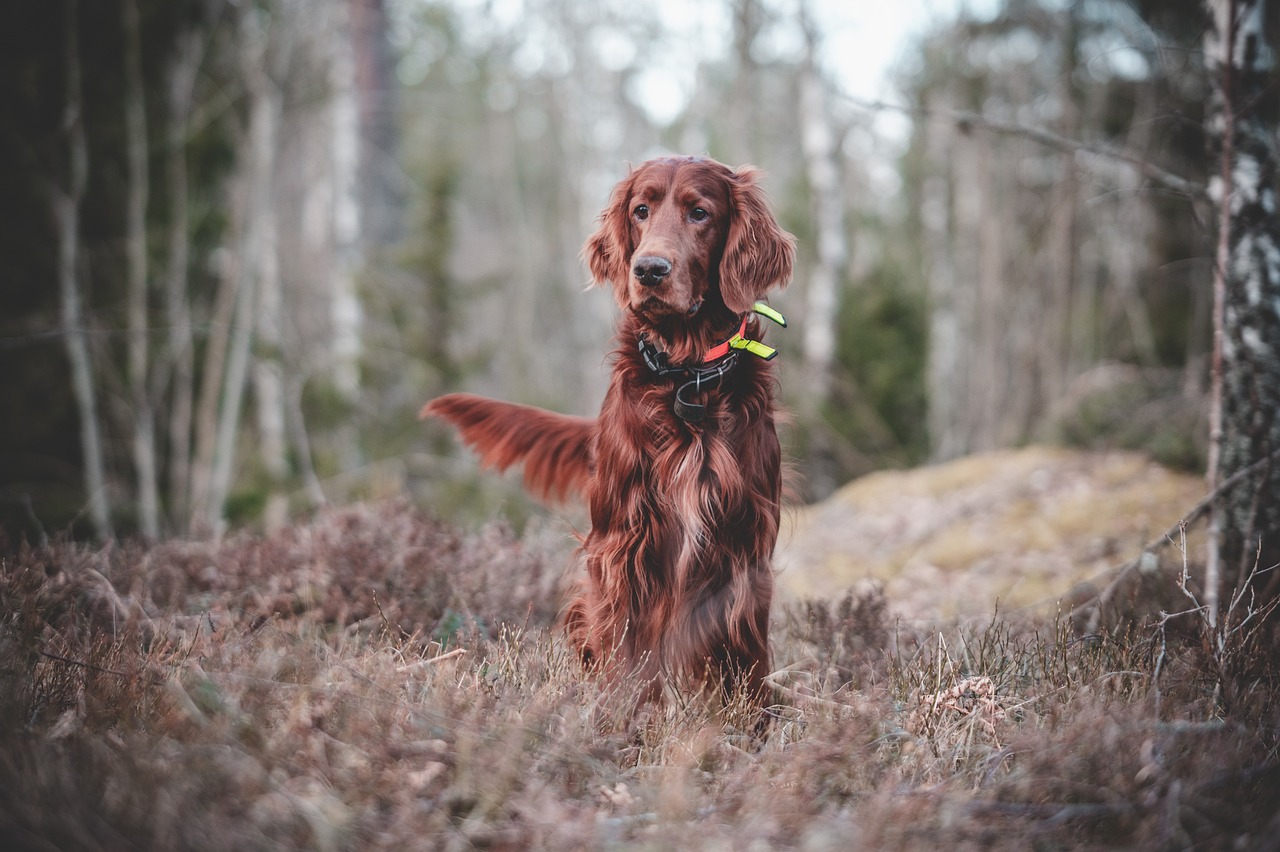
Monitoring Progress and Adjusting
Monitoring your dog's progress is not just a good idea; it's essential for creating a successful routine that benefits both you and your furry friend. Just like humans, dogs can evolve, and their needs may change over time. This is why regularly assessing how well your dog is adapting to the established routine is crucial. By keeping a close eye on their behavior, energy levels, and overall happiness, you can make necessary adjustments that ensure their comfort and well-being.
One effective way to monitor progress is by maintaining a simple journal or log. This can help you track your dog's daily activities, eating habits, and any changes in behavior. For instance, if you notice your dog seems more restless or anxious than usual, it might be time to tweak the routine. Here’s a quick example of what your log could look like:
| Date | Feeding Times | Exercise Duration | Behavior Observations |
|---|---|---|---|
| 10/01 | 8:00 AM, 6:00 PM | 30 minutes | Calm and happy |
| 10/02 | 8:00 AM, 6:00 PM | 45 minutes | Restless after meals |
In addition to keeping a log, it's vital to be observant of your dog's body language and behavior. Recognizing signs of stress can be a game-changer. For example, if your dog is hiding, whining, or exhibiting destructive behavior, these could be indicators that something in the routine isn't working for them. Adjusting the timing of walks or play sessions might be necessary to better align with their needs.
Moreover, celebrating milestones is just as important as monitoring progress. Acknowledging your dog's achievements, no matter how small, can create a positive reinforcement cycle. This could be as simple as giving them extra praise or a special treat when they successfully follow the routine for a week straight. It fosters a sense of accomplishment and motivates them to continue adhering to the established habits.
Ultimately, the key to a successful routine lies in your ability to be flexible and responsive. Dogs thrive on consistency, but they also need to feel comfortable and secure. By regularly monitoring their progress and making adjustments as necessary, you can ensure that your routine remains effective, enjoyable, and beneficial for both you and your dog.
- How often should I adjust my dog's routine? It's best to assess your dog's routine every few weeks or whenever you notice changes in their behavior.
- What signs indicate my dog is stressed? Look for signs like excessive barking, hiding, chewing furniture, or changes in appetite.
- Can I reward my dog for following the routine? Absolutely! Positive reinforcement is a great way to encourage good behavior.
- What should I do if my dog refuses to follow the routine? Consider revisiting the routine to see if it's too demanding or if your dog needs more time to adjust.
Recognizing Signs of Stress
This article provides essential strategies for establishing a routine with your dog, ensuring consistent behavior, improved training outcomes, and a stronger bond between you and your furry friend.
Recognizing your dog's physical and emotional needs is crucial for creating an effective routine that promotes their well-being and happiness, ultimately leading to better compliance and behavior.
Creating a structured daily schedule helps your dog know what to expect, reducing anxiety and promoting a sense of security. Consistency in feeding, walks, and playtime is key.
Setting specific feeding times not only aids digestion but also helps your dog anticipate meals, leading to a calmer, more disciplined behavior around food.
Selecting high-quality food tailored to your dog's age and activity level can enhance their overall health, making them more receptive to following a routine.
Understanding portion sizes is essential for maintaining your dog's health and preventing obesity, which can affect their energy levels and willingness to engage in routine activities.
Incorporating regular exercise into your dog's routine is vital for their physical and mental health, helping them expend energy and remain focused during training sessions.
Utilizing positive reinforcement techniques can help reinforce desired behaviors, making it easier for your dog to adapt to the established routine and follow commands.
Rewarding your dog with treats or praise for following the routine encourages them to repeat those behaviors, strengthening their understanding and compliance.
Using the same commands consistently helps your dog learn faster, as they associate specific words with actions, making it easier to follow the routine you've set.
Regularly assessing your dog's progress allows you to make necessary adjustments to the routine, ensuring it remains effective and suitable for their evolving needs.
Being attentive to your dog's body language and behavior can help you identify signs of stress, allowing you to modify the routine to better suit their comfort level. Just like humans, dogs can experience stress, and it's important to recognize when they are feeling overwhelmed or anxious. Some common indicators of stress in dogs include:
- Excessive Barking: If your dog barks more than usual, it may be a sign of stress or discomfort.
- Tucked Tail: A tail that is tucked between the legs can indicate fear or anxiety.
- Pacing: If your dog is pacing back and forth, it may be trying to cope with stress.
- Averting Eye Contact: Dogs that avoid eye contact may be feeling stressed or threatened.
- Destructive Behavior: Chewing on furniture or other items can be a sign of stress or boredom.
Recognizing these signs is the first step in helping your furry friend feel more at ease. If you notice any of these behaviors, consider adjusting your dog's routine. Perhaps they need more exercise, a quieter environment, or a change in their feeding schedule. Just like how we sometimes need a break from our hectic lives, dogs also benefit from a routine that takes their emotional needs into account.
Acknowledging and celebrating your dog's achievements, no matter how small, fosters a positive environment and motivates them to continue following the established routine.
- How long does it take for a dog to adapt to a new routine?
Every dog is different, but generally, it can take a few weeks for a dog to fully adapt to a new routine. - What should I do if my dog shows signs of stress?
If your dog shows signs of stress, try to identify the cause and make adjustments to their routine. Providing a calm environment or increasing exercise can help. - Is it necessary to have a strict routine for my dog?
While a strict routine can be beneficial, it's important to remain flexible and adjust to your dog's needs and preferences.
Celebrating Milestones
Celebrating milestones in your dog's training journey is not just about acknowledging progress; it’s about building a stronger bond between you and your furry friend. Just like humans, dogs thrive on recognition and positive reinforcement. When you take the time to celebrate their achievements, no matter how small, you’re sending a powerful message: “I see you, and I’m proud of you!” This affirmation can boost their confidence, making them more eager to follow the established routine.
So, how can you effectively celebrate these milestones? Here are a few creative ideas:
- Special Treats: After a successful training session or when your dog follows the routine flawlessly, reward them with their favorite treats. This not only reinforces good behavior but also makes them associate training with something enjoyable.
- Praise and Affection: Sometimes, a simple “Good boy!” or “You did it!” accompanied by belly rubs or ear scratches can mean the world to your dog. They thrive on your approval and love.
- Fun Activities: Celebrate by engaging in a fun activity your dog loves, such as a trip to the dog park, a long walk, or a game of fetch. This not only rewards their hard work but also strengthens your relationship.
- Personalized Celebrations: Consider creating a special “graduation” ceremony for your dog after they master a significant skill. You could create a cute certificate or even throw a little party with friends and their dogs.
Remember, the key is to make these celebrations consistent with their achievements. If your dog has successfully learned a new command or adjusted well to the daily routine, make it a point to celebrate that milestone. This practice will not only motivate them but also reinforce their desire to follow the routine you’ve established.
Moreover, celebrating milestones doesn’t have to be a grand affair every time. It can be as simple as a few extra cuddles or a few minutes of playtime. The important thing is to make your dog feel valued and appreciated. This emotional connection fosters a sense of security and encourages them to embrace the routine you’ve set for them.
In conclusion, the celebration of milestones is a crucial part of the training process. It transforms routine into a rewarding experience for your dog, making them more likely to engage positively with the structure you’ve created. So, don’t skip this vital step! Make it a habit to recognize and celebrate every little victory in your dog’s journey towards a well-followed routine.
Q: How often should I celebrate my dog's milestones?
A: Celebrate each milestone as it occurs, whether it’s mastering a new command or adjusting to a new routine. The frequency can vary, but recognizing achievements regularly keeps your dog motivated.
Q: What if my dog doesn’t seem to respond to celebrations?
A: Every dog is different. If your dog doesn’t seem to respond to certain celebrations, try varying your approach. Some dogs may prefer playtime over treats, while others may enjoy verbal praise more.
Q: Can I overdo the celebrations?
A: While it’s important to celebrate, moderation is key. Over-celebrating can lead to confusion about what behaviors are truly commendable. Keep it meaningful and aligned with their achievements.
Frequently Asked Questions
- Why is establishing a routine important for my dog?
Establishing a routine is crucial because it helps your dog understand what to expect throughout the day. This predictability reduces anxiety and promotes a sense of security, leading to better behavior and a stronger bond between you and your furry friend.
- How can I determine the best feeding times for my dog?
The best feeding times for your dog depend on their age, activity level, and specific dietary needs. Generally, feeding them at the same times each day helps regulate their digestion and keeps them calm, as they learn to anticipate mealtime.
- What type of food should I choose for my dog?
Selecting high-quality food tailored to your dog's age, size, and activity level is essential for their overall health. Consult with your veterinarian to find the best options that provide the necessary nutrients to keep your dog energized and happy.
- How much exercise does my dog need?
The amount of exercise your dog needs varies by breed, age, and health. Generally, most dogs require at least 30 minutes to 2 hours of exercise daily. Regular exercise helps them expend energy and remain focused during training, making it easier for them to follow your established routine.
- What are effective training techniques for consistency?
Positive reinforcement is one of the most effective training techniques. Rewarding your dog with treats, praise, or affection when they follow commands reinforces the desired behavior. Consistency in your commands and rewards helps your dog learn faster and adapt to the routine.
- How can I monitor my dog's progress with the routine?
Regularly assessing your dog's behavior and responsiveness to the routine is key. Keep an eye on their body language, and note any changes in their energy levels or stress signs. If something isn't working, don't hesitate to make adjustments to better suit their needs.
- What should I do if my dog shows signs of stress?
If you notice signs of stress, such as excessive barking, panting, or withdrawal, it's important to reassess the routine. You may need to modify activities, reduce the intensity of training, or provide more breaks to ensure your dog feels comfortable and secure.
- How can I celebrate my dog's milestones?
Celebrating your dog's achievements, no matter how small, can be as simple as giving them extra praise, a special treat, or a fun play session. This positive reinforcement not only motivates your dog but also strengthens your bond, making them more eager to follow the routine.

